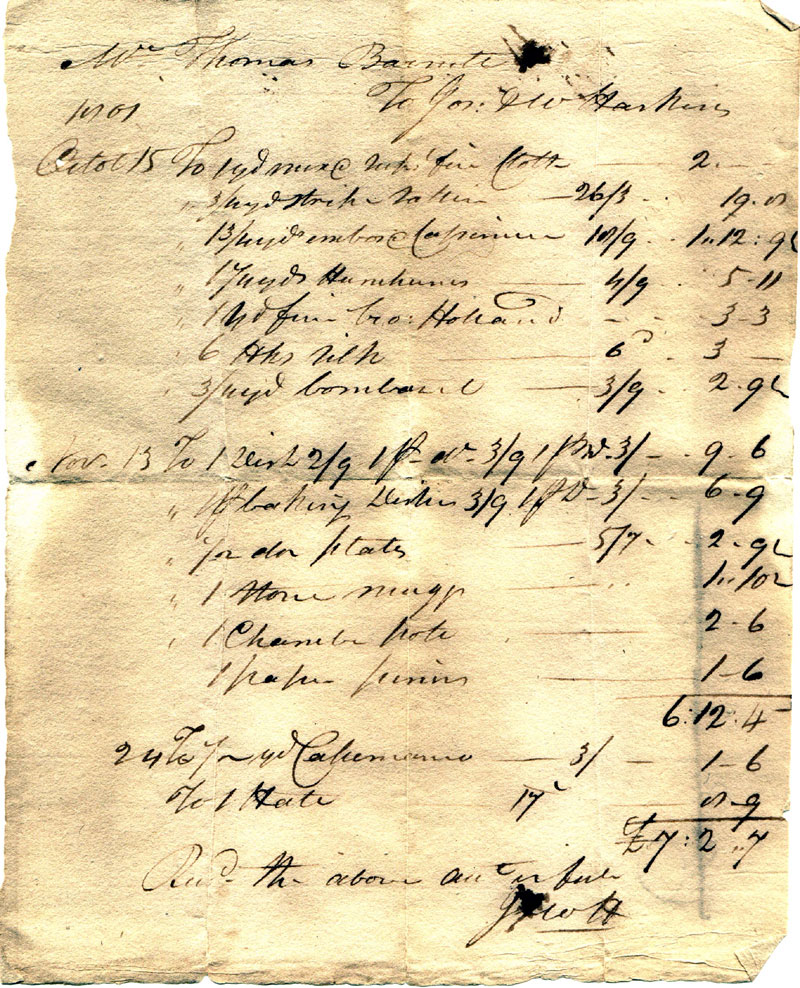 1801 bill from Joseph & W. Harkin to Thomas
Barnett who lived on what is now Milan Farm on Island
Creek Neck for seven pounds two shillings and seven
pence worth of cloth and dishes. It was common
practice at this time in the U.S. to use English
money.
1801 bill from Joseph & W. Harkin to Thomas
Barnett who lived on what is now Milan Farm on Island
Creek Neck for seven pounds two shillings and seven
pence worth of cloth and dishes. It was common
practice at this time in the U.S. to use English
money.
Many of the obscure names are for types of cloth
popular at that time. Holland was an unbleached linen
or flax, broc. is probably short for brocade, a heavy
cloth into which designs have been woven, callimanco
was a glazed woolen cloth. And of course, a chamber
pot was kept under ones bed for use in the days
before indoor plumbing.
Mr. Thomas Barnett To
Jos: & W Harkin
1801
Octob 15 To 1 yd [mun?] @ sup fine Cloth 2.
“
3/4 yd stripe sattin- 16/3.. 19.01
“
1 3/4 yds embrod @ [Capernum?] 18/9.. 1..12:9
“
1 1/4 yds [Hunkunis?] 4/9.. 5-11
“
1 yd fine bro Holland-- 3-3
“
6 [Hks?] silk 6d 3-
“
3/4 yd [bombard?]- 3/9.. 2.9
Nov. 13 To 1 Dish 2/9 1 [?]- d. 3/9 1 PD. 3/-
9-6
“
[?] baking dishes 3/9 1 PD-3/ 6-9
“
1/2 doz plates-5/7 2.9
“
1 stone mugg- 1.10
“
1 Chamber pott- 2.6
“
1 paper pinns- 1.6
6.12:4
24To 1/2 yd Caliemenio-
3/ 1.6
To
1 Hatt-
17
8.9
£
7.2.7
Recd. the
above amt in full
J&WH
|
